Sustainable Event CAPS Maiden Effort
Read the Magazine in PDF
Abstract
The sustainable event spans the phase of pre-event, during-event, and post-event activities, leaving the event with a legacy of being planned based on the commitments set out on sustainability. This event was not pre-planned but an effort to take stock of the carbon footprint generated by the flights taken by the GC members during the Leadership meeting held at Cinnamon Bay, Beruwala, Colombo. Cinnamon Bay happens to be Srilank’s first LEED Gold-certified Green resort. The innovative idea to offset the carbon footprint through a process of participation of personal effort by the GC members has a contribution to make the trip carbon neutral and beyond attached with the effort to monitor the progress of the trees committed to being planted for the next three years. The summary of carbon footprint generated from the flight travel and bus trip taken locally in Colombo accounted for 12,372 KgCO2e; the offsetting was done by fully grown trees pledged by each GC member and that contributed to 8170 KgCO2 and from the commitment to develop new trees came in 4220 Kg CO2. This made the trip go just beyond carbon neutral.
Introduction
Carbon Neutral Flight Travel Emission accounting-Methodology
To assess the carbon dioxide (CO2) emissions from flight travel, this study adopted the methodology prescribed by the International Air Transport Association (IATA). The following 3-step process flow is implemented to assess the overall passenger CO2 emissions.
- Total CO2 emission accounting of the flight based on fuel burn.
- Allocating CO2 emissions based on passenger and belly cargo weight.
- CO2 emission allocation to individual passengers based on the cabin class.
A. Total CO2 Emissions of the Flight Based on Fuel Burn
This initial step requires the travel details of the participant, which can be extracted from the flight ticket. The following information is requested from the participants to assess the overall emissions.
- Travel Date.
- Travel Itinerary (Example – Round trip source and destination airports).
- Airline (Example – Indigo, Vistara, etc.)
- Aircraft (Example – Airbus 320, ATR 78, Boeing 777, etc.)
- Cabin Class (Example – Economy, Business, First Class, etc.)
- Duration of the Travel (Minutes)
Based on the above input information, further data on the total fuel burn for the entire journey in Kilograms (Kg) and the fuel emission factor for jet kerosene is collected from the International Civil Aviation Organization (ICAO).
Finally, total flight emissions are calculated by multiplying the fuel emission factor and the quantity of fuel burnt during the journey, as shown in the formula below;
Total Flight emission = Fuel burnt (kg) X Fuel emission factor (KgCo2)/Kg fuel
B. Allocating CO2 Emissions Based on Passenger and Belly Cargo Weight.
Since passenger aircraft also carry cargo besides passengers, the following data is required to assess carbon dioxide emissions for both individually.
- Aircraft Model (Example: Airbus 320, ATR 78, Boeing 777, etc.)
- Cabin Configuration (Economy – Business – First Class)
- Seat Layout
- Passenger Capacity
- Total Weight of Passengers, including their Baggage
- Total Weight of the Cargo
This study collects airline fleet details such as aircraft type, cabin configuration, seat layout, and passenger capacity from the airlines’ official website. These specifications help determine the passenger and cargo weight ratio to allocate carbon dioxide emissions exclusively for the individual passenger and the cargo. Table-1 indicates the airlines used by the participants who attended the event, and the source column in table-1 provides access to the aircraft fleet specifications required for this assessment.
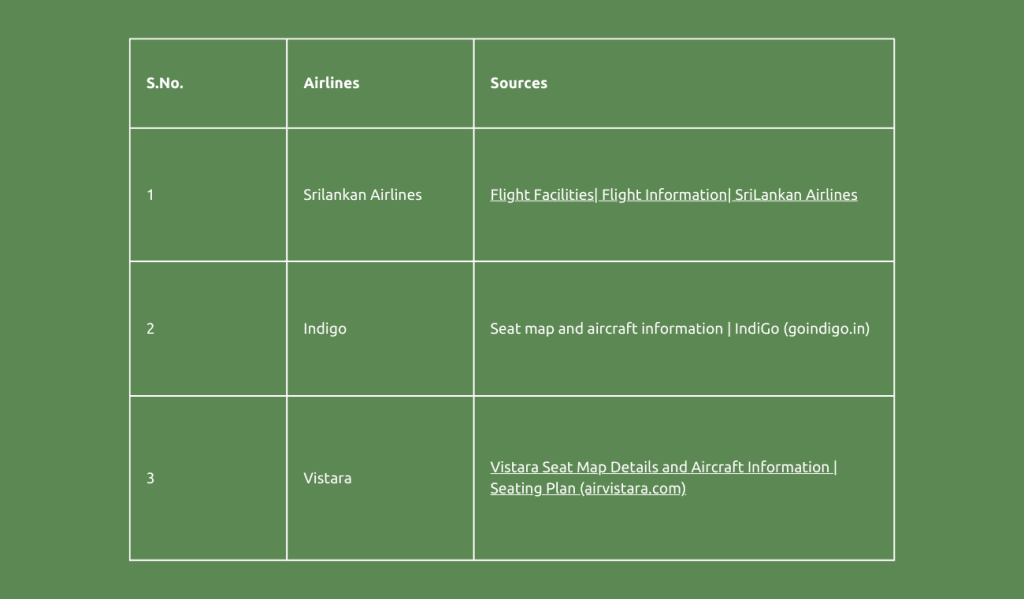
After collecting the aircraft fleet specifications, the total weight of passengers and the cargo need to be determined. To do this, the Individual passenger weight is primarily assumed to be 100kg, including the baggage. Based on this assumption, the total passenger weight is found by multiplying the passenger weight by the number of passengers travelling in the aircraft.
On the other hand, cargo weight for the aircraft is collected from different sources, as mentioned in Table-2 After collecting the required data mentioned in the list above, the Passenger ratio is derived using the following formula:
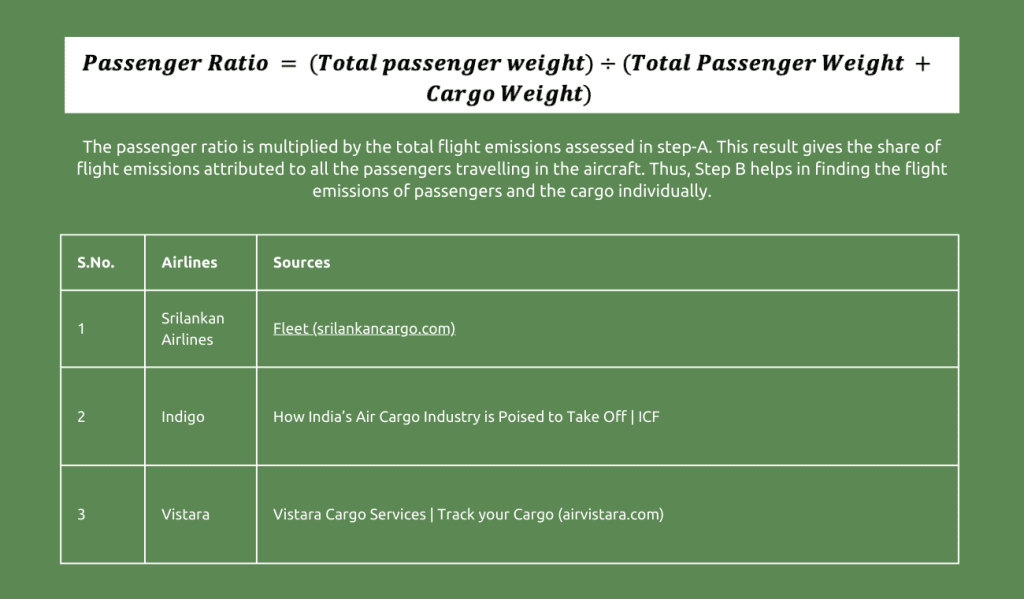
C. CO2 Emission Allocation to Individual Passengers Based on the Cabin Class
In this final step, the cabin configuration and seat layout information, such as the total cabin classes (economy, business, first class, etc.) and number of seats allocated to each cabin class, is required to be able to estimate emissions for passengers according to their cabin class. It is to be noted that business class and first class travellers accommodate fewer passengers due to the differences in the seat pitch in the same amount of space allocated for
each cabin. Hence, extra weightage is allocated to these cabin classes. Table-3 presents the cabin factors assigned to each cabin class to estimate passenger emissions according to their cabin class.
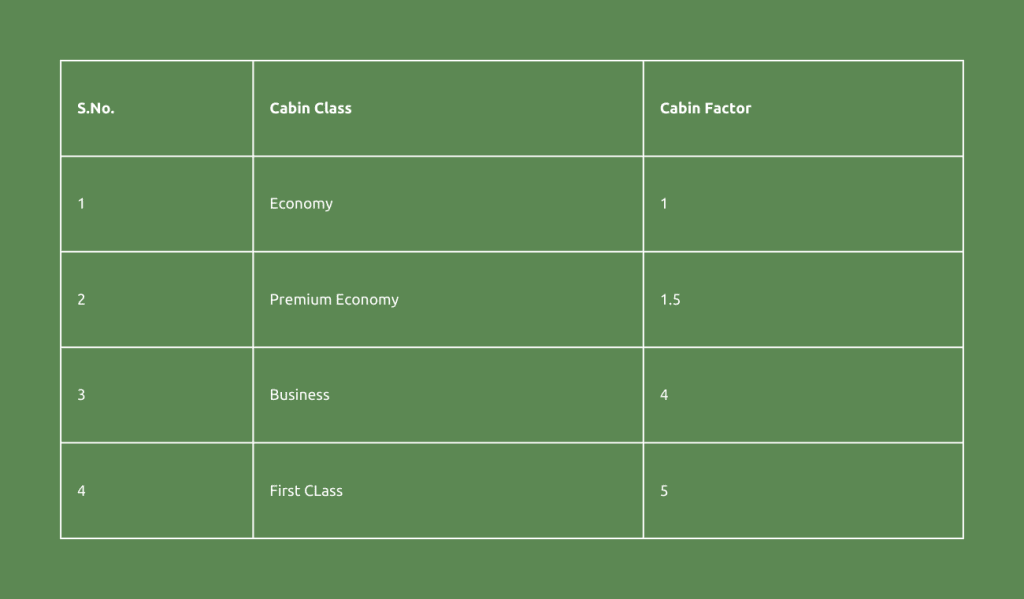
Considering these cabin factors, individual passenger carbon dioxide emissions for economy class can be estimated based on the following formula:

Where,
- Economy Class Cabin Factor = ECF
- Business Class Cabin Factor = BCF
- First Class Cabin Factor = FCF
- No of Economy Class Seats = ECS
- No of Business Class Seats = BCS
- No of First Class Seats = FCS
Similarly, using this formula, Individual CO2 emissions can be estimated for all the other cabin classes, and aggregate flight emissions can be derived for individual passengers participating in the event.
Carbon Off-Setting Methodology
To neutralise the flight travel carbon emissions, this study collected different parameters from the participants, such as
- The number of trees owned by the participants is at least 3 years old.
- Did the participant book the ticket with an option to neutralise the carbon footprint? (Yes or No)
- Inclination towards planting more trees to offset emissions.
- Average carbon sequestration potential of a tree. and
- The total flight travel emissions that took place during the event.
Initially, a survey is conducted to determine the number of mature trees the participants own. The carbon sequestration potential of a mature tree is assumed to be 10 kg per year, which is an estimate based on the Winrock International Forest Landscape Restoration (FLR) carbon storage calculation methodology. This estimate is derived from data on biomass accumulation from over 330 published studies and reports.[3] Based on this input information, the carbon sequestration potential of a tree is estimated using the following formula.

Where,
- Total Carbon Sequestration Potential = Total CO2seq Pt
- Number of mature trees owned by the participant = No of mature trees
- Carbon sequestration potential of a tree = Tree CO2 Seq Pt
Finally, the carbon offset status of the event is the difference between total individual flight travel emissions (KGCO2) and total CO2 sequestration potential (KGCO2) of all the mature trees owned by the participants in the event.
When this result is a positive number, it indicates more trees need to be planted to reduce the number to zero. If the result is negative, it suggests the event successfully managed to offset the flight travel emissions.
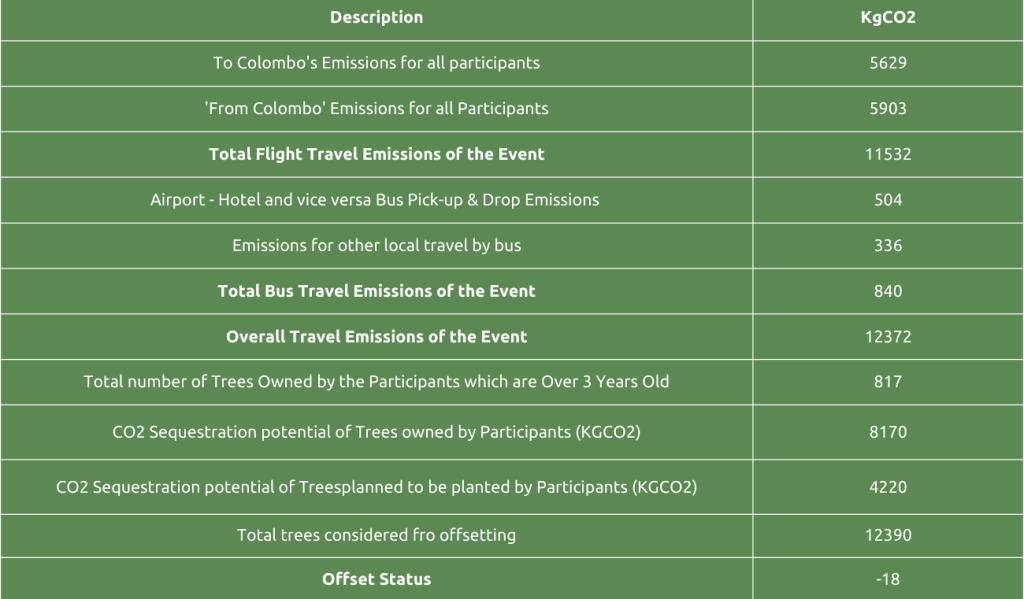
Some of the limitations of the above study are that the personal trips made by people are not accounted for. Also, the travel to the airport from home and from the airport to home is not accounted for. The commitment made for the planting of new trees will be monitored by CAPS for the next 3 years for its survival rate as part of the commitment towards the carbon neutralization of this trip.
LEED Certified Hotel
Leadership in Energy and Environmental Design (LEED) is a set of rating systems for designing, constructing, operating and maintaining green buildings, homes and neighbourhoods. Developed by the US Green Building Council (USGBC), LEED is intended to help building owners and operators be environmentally responsible and use resources efficiently.
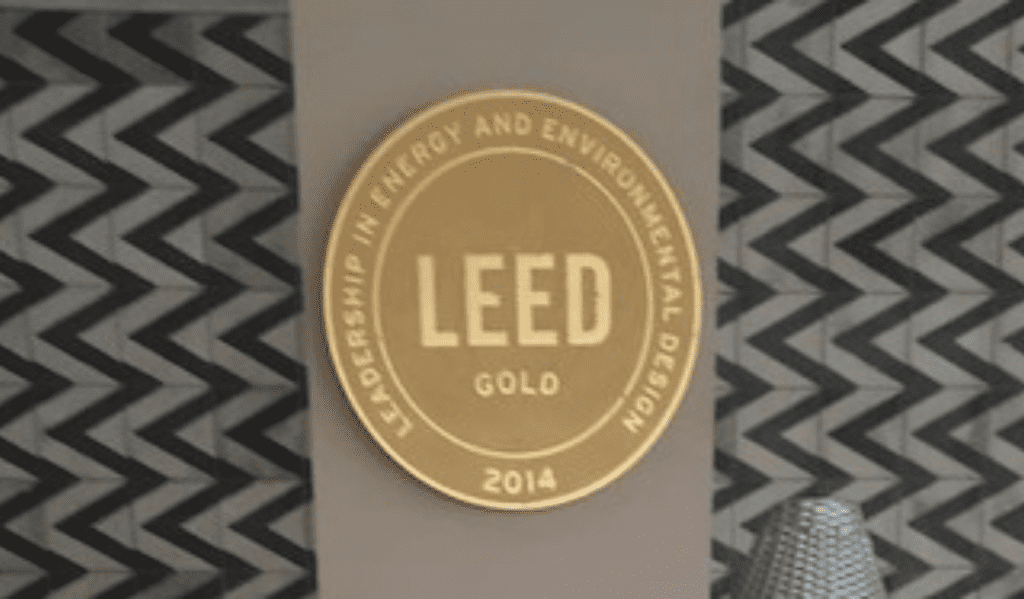
Dr, Anuradha Pichumani says she enjoyed the “Cinnamon Bey” hotel in Srilanka, a hotel committed to environmental sustainability and appreciates the effort put in to protect, preserve and nurture the environment by creating substantial green spaces. Some of the unique features she speaks of are the natural ventilation for all the rooms and passages, having plants to create breathing spaces inside the hotel near the restaurant, giving it gives a feel of being in the lap of nature beside the beach extending beyond the swimming pool that’s maintained well. To improve environmental sustainability, the hotel has implemented – ISO 14001: 2015 _ an implementation of green standards on Design, construction and operational process with steps to reduce the usage of water and energy, with the reuse of waste water and recycling waste to add value to destruction.
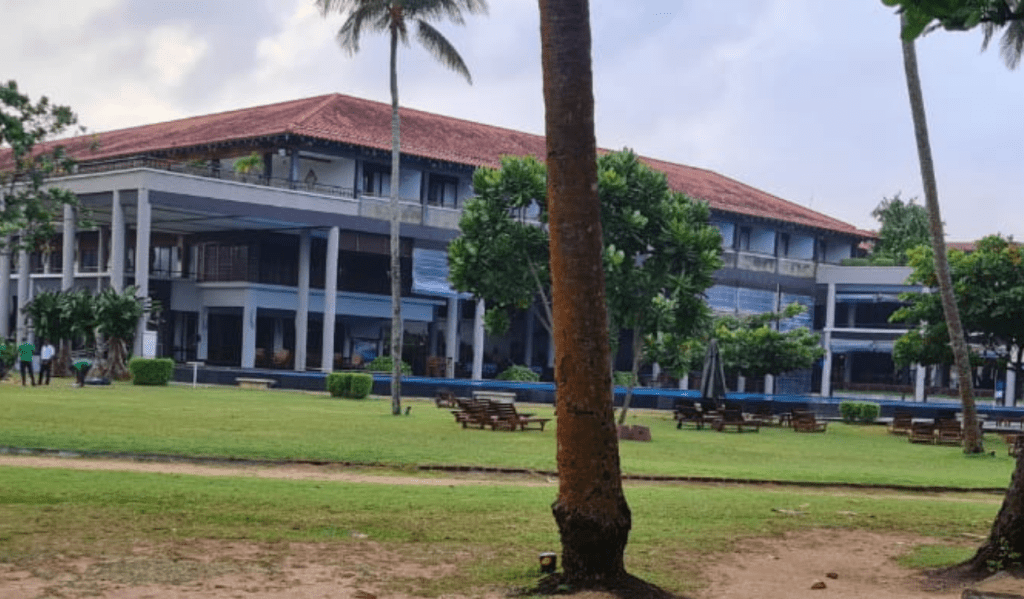
Open stage for performance without air conditioning
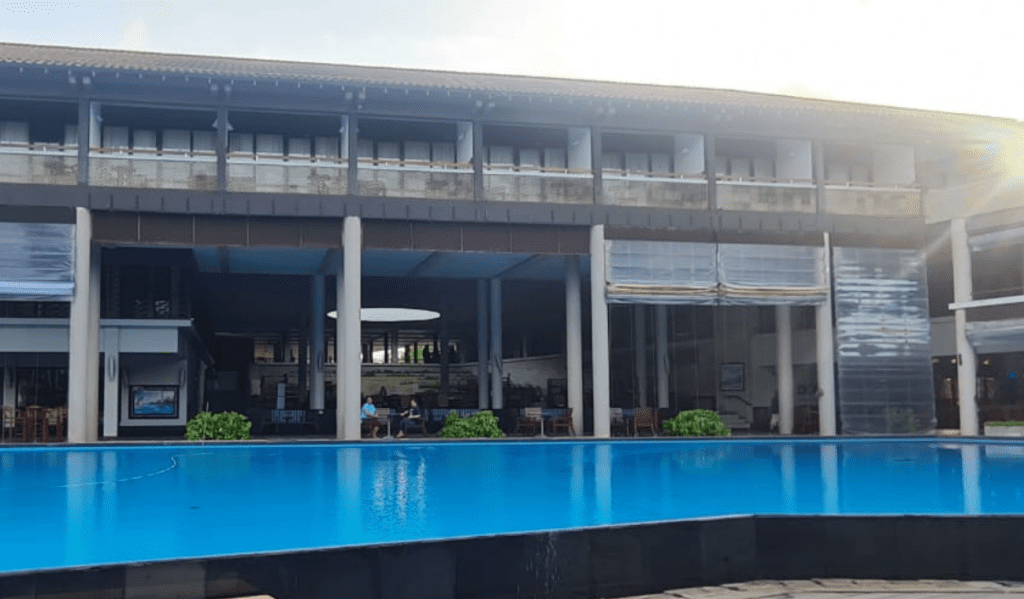
Dr Shwetha Prabhkar mentions in her experience that from the moment of arrival, a beautiful facade made of recycled materials greeted us, The hotel’s interior design was equally impressive. Using natural light through strategically placed windows and skylights not only created a warm and inviting atmosphere but also minimized the need for artificial lighting during the day. The furniture and decor were well crafted, giving a unique and eco-friendly touch to each space. One of the standout features was the innovative water conservation system. The hotel had implemented rainwater harvesting techniques, collecting rainwater and utilizing it for landscaping. This thoughtful approach to water management showcased their dedication to reducing water waste. Furthermore, the hotel had incorporated energy-efficient practices throughout the property. Some of the unique features she speaks of is the natural ventilation for all the rooms and passages, having plants to create breathing spaces inside the hotel near the restaurant made it give a feel of being in the lap of nature beside the beach extending beyond the swimming pool thats maintained well. To improve on environmental sustainability, the hotel has implemented – ISO 14001: 2015 _ implementation of green standards on Design ,construction and operational process with steps to reduce the usage of water and energy, with reuse of waste water and recycling waste to add value to waste.
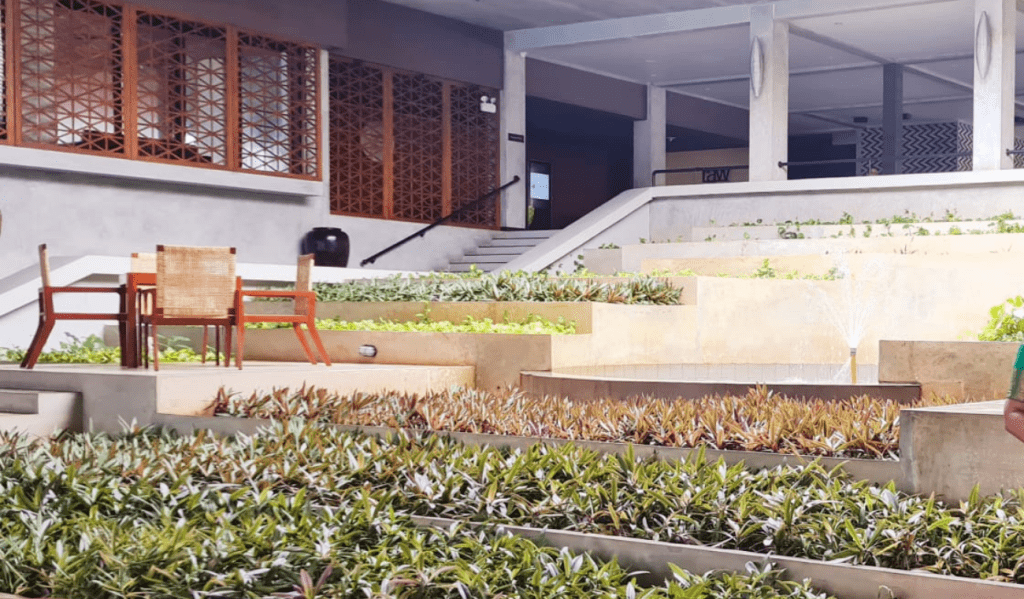
I was particularly impressed by the hotel’s commitment to local sourcing and supporting the community. The on-site restaurant proudly served organic, locally sourced ingredients, supporting local farmers and reducing the carbon footprint associated with transportation. The menu featured a variety of Non-vegetarian, vegetarian and vegan options, further promoting sustainable and healthy dining choices. The hotel gave enough opportunity to conscious travellers seeking both comfort and the opportunity to positively impact the planet.
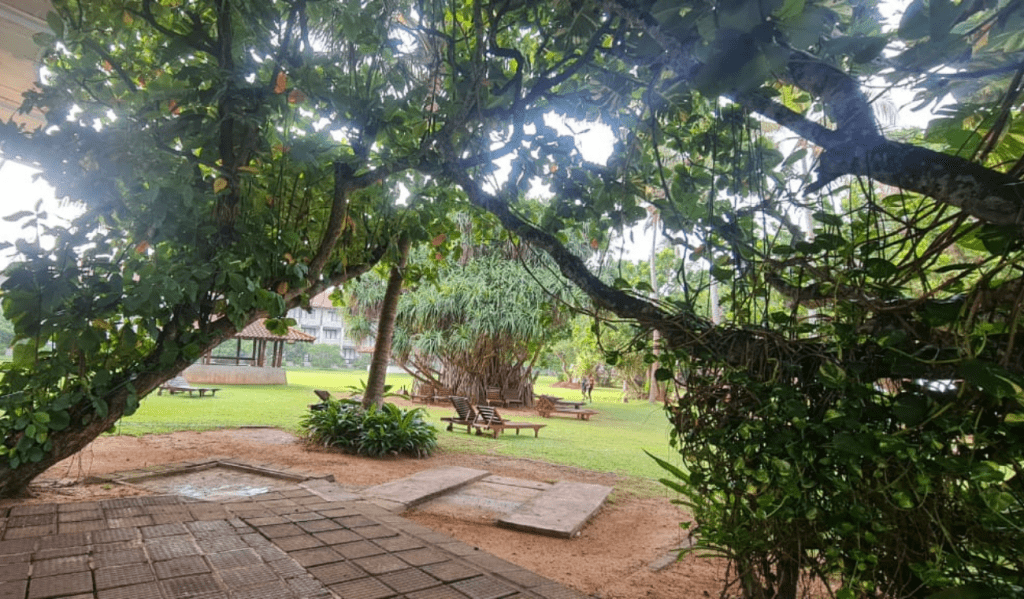
Dr Anna George says the hotel stay was enjoyable and comfortable. It was plastic-free, had lots of greenery, beautiful landscaping and a great ambience. The considerable terrace on my floor overlooking the beach was a sight. It provided the perfect place for watching the sunset or a rendezvous with close friends. The food was simply excellent, with the most extensive buffet spread I’ve ever seen, and everything tasted so good. The beach, which is just a walk away, was the highlight. The cleanliness of the beach and the lovely sea was thoroughly enjoyable.
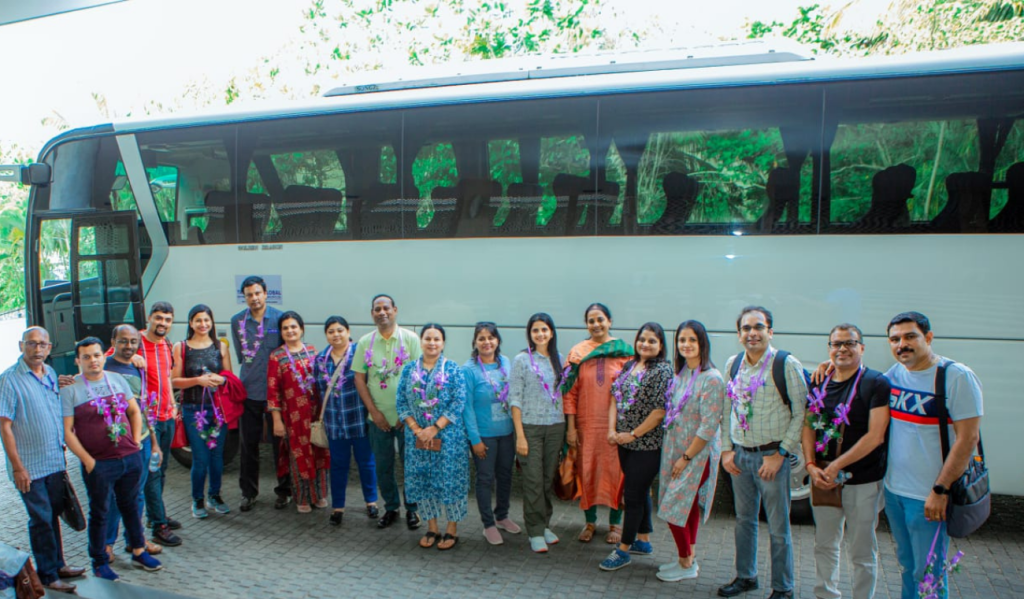
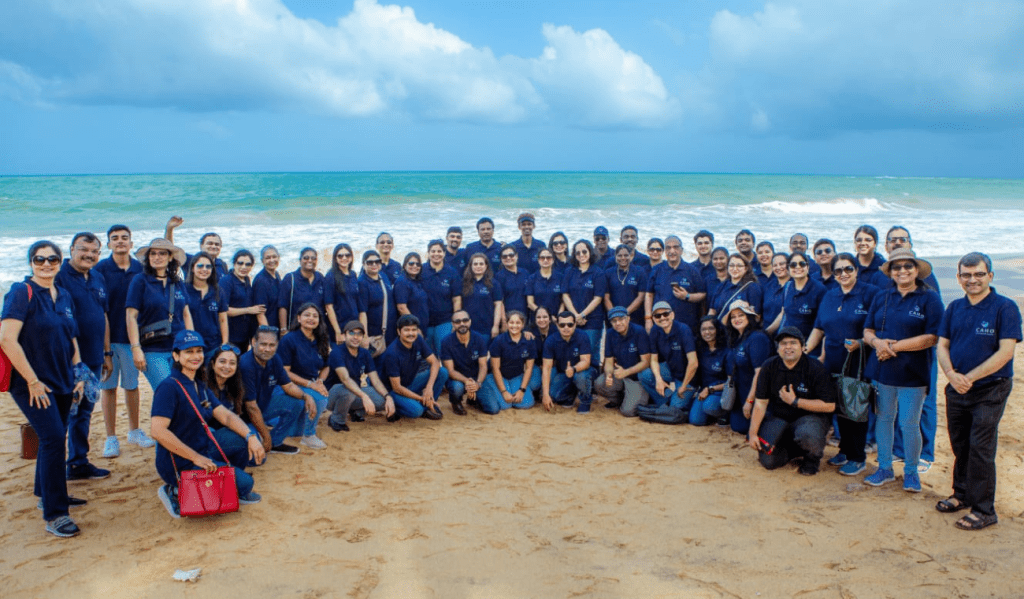
Trip Experience
My own experience was fantastic to see some of the unique design features, such as a central dome allowing natural air circulation and an open theatre experience on the dance floor without the need for air conditioning. The restaurant area was also not air-conditioned, but it didn’t cause much discomfort to the guests. The trip had more things to add to experiencing nature; the visit to mangroves and the turtle conservation project added more to our memories, some shared in the pictures below.
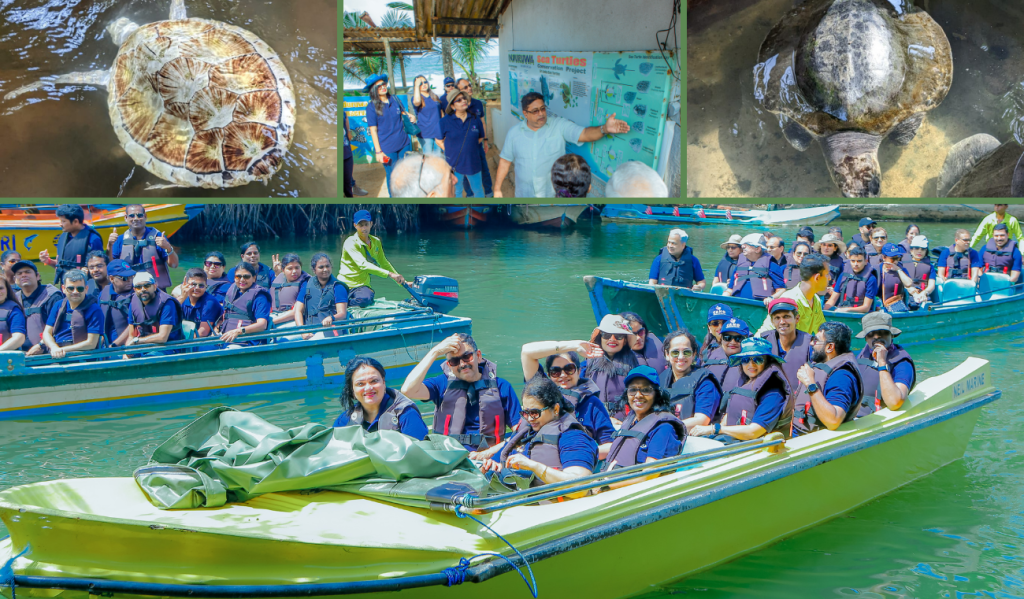
Authors
-

-

Consultant - FMS, Rajagiri Hospital Kochi, Aluva, Consultant and Head - V B G Consulting Engineers



